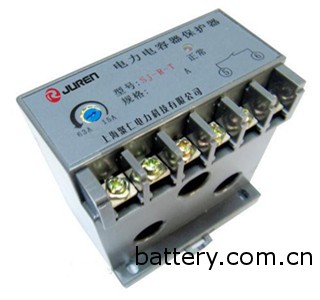
Privacy statement: Your privacy is very important to Us. Our company promises not to disclose your personal information to any external company with out your explicit permission.
![]() December 16, 2020
December 16, 2020
The power capacitor protector is a power capacitor control system that can be combined with a switching capacitor contactor, a reactive power compensation controller, and a fuse. It is mainly used as an overcurrent, short circuit, inrush current, harmonic, and overvoltage in a power capacitor and a compensation compensation circuit. When the fault is protected, the power capacitor protector as a new product of overcurrent protection fills the gap of the domestic power capacitor protector, and can be widely applied to the power factor automatic compensation control circuit.

Application Notes for Power Capacitor Protectors
1. The working power of the protector should match the nominal voltage.
2. The wiring of the protector terminal should be correct and the contact is good.
3. Regular inspections should be carried out to ensure reliable operation.
4. After the protection action indication, the type indicated by the fault must be carefully observed, and the cause of the fault should be carefully checked, and the fault can be operated again after the fault is correctly handled.
5. When the capacitor is put into operation, the running indicator is flashing. If an overcurrent trip occurs in a short time, apply the clamp ammeter to measure the current running current of the capacitor. If the current value exceeds 1.35 times of the rated current. Explain the normal overcurrent action within the protection range. Otherwise it may be caused by excessive harmonic content in the power grid.
6. Basic judgment on the running current state of the capacitor: When the capacitor is put into normal operation, the running indicator light flashes at a certain frequency. If the flashing frequency is low or no flicker, the running current of the capacitor is very small, or there may be no current. This may be because the contactor in the control circuit is not put into operation or the capacitor's own capacitance is reduced.
7. After the protector is self-locking or fault alarm, the self-locking light is on. It indicates that the capacitor circuit has a large current fault, and it is necessary to carefully check the cause. After the fault is removed, the reset can be started to avoid repeated expansion of the fault.
The above is the Application tips for power capacitor protectors we have listed for you. You can submit the following form to obtain more industry information we provide for you.
You can visit our website or contact us, and we will provide the latest consultation and solutions
Send Inquiry
Most Popular
lastest New
Send Inquiry
Send Inquiry

Mr. JOHN CHANG
Tel:86-514-87782298
Fax:86-514-87782297
Mobile Phone:+8613375278321
Email:info@stt.tm
Address: 3rd Floor, Weiheng Building No.20 B Area, Yangzhou, Jiangsu,China, Yangzhou, Jiangsu
Related Products List
Mobile Site


Privacy statement: Your privacy is very important to Us. Our company promises not to disclose your personal information to any external company with out your explicit permission.

Fill in more information so that we can get in touch with you faster
Privacy statement: Your privacy is very important to Us. Our company promises not to disclose your personal information to any external company with out your explicit permission.